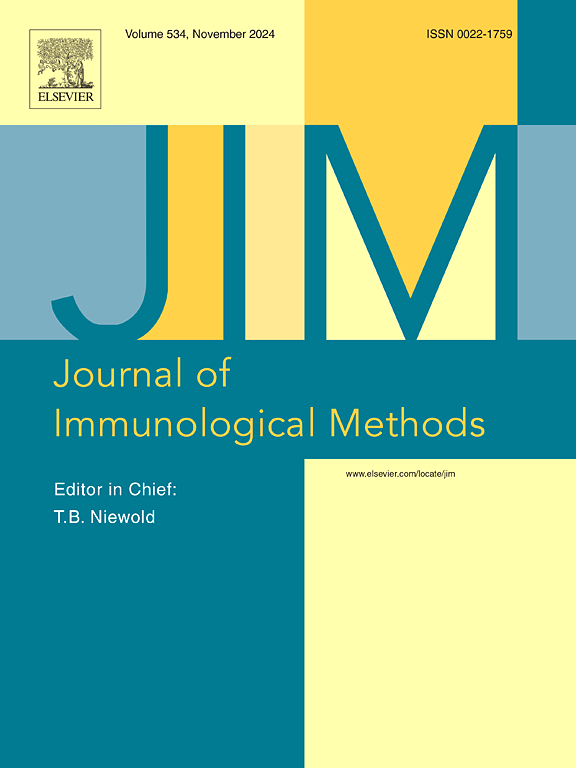多重微芯片免疫分析法、VaxArray和中尺度发现法用于血清型特异性冠状病毒IgG定量的比较评估
IF 1.6
4区 医学
Q4 BIOCHEMICAL RESEARCH METHODS
引用次数: 0
摘要
在过去的几年中,血清学的免疫分析已经从放射免疫分析发展到基于多路微阵列的技术。比较研究可以帮助用户根据其适用性和性能特征选择检测平台。本研究将一组人类血清样本与9层商业VaxArray冠状病毒血清测定(InDevR)和10层半定制冠状病毒血清测定(MSD)进行了比较。MSD检测在所有冠状病毒血清型中表现出优越的动态范围和灵敏度,两种检测方法均达到准确度(100 ± 20 %)和精密度(%CV)本文章由计算机程序翻译,如有差异,请以英文原文为准。
Comparative assessment of a multiplex micro-chip immunoassay, VaxArray, and meso scale discovery assay for serotype-specific coronavirus IgG quantitation
Immunoassays for serology have advanced from radio-immunoassays to multiplexed micro-array-based technologies over the past years. Comparative studies can assist users in selecting an assay platform based on its applicability and performance characteristics. This study compared a 9-plex commercial VaxArray Coronavirus SeroAssay (InDevR) and a 10-plex semi-custom Coronavirus SeroAssay (MSD) with a panel of human serum samples. The MSD assay showed superior dynamic range and sensitivity across all coronavirus serotypes, while both assays met accuracy (100 ± 20 %) and precision (%CV < 25 %) criteria. Although both platforms were concordant for anti-SARS-CoV2 IgG measurements, the clinical sensitivity and specificity of the MSD assay were marginally higher than those of VaxArray. Despite VaxArray's shorter total assay time and higher potential for multiplexing and re-readability, it requires improvements in dynamic range, sensitivity, specificity, and automation capabilities for regulated use.
求助全文
通过发布文献求助,成功后即可免费获取论文全文。
去求助
来源期刊
CiteScore
4.10
自引率
0.00%
发文量
120
审稿时长
3 months
期刊介绍:
The Journal of Immunological Methods is devoted to covering techniques for: (1) Quantitating and detecting antibodies and/or antigens. (2) Purifying immunoglobulins, lymphokines and other molecules of the immune system. (3) Isolating antigens and other substances important in immunological processes. (4) Labelling antigens and antibodies. (5) Localizing antigens and/or antibodies in tissues and cells. (6) Detecting, and fractionating immunocompetent cells. (7) Assaying for cellular immunity. (8) Documenting cell-cell interactions. (9) Initiating immunity and unresponsiveness. (10) Transplanting tissues. (11) Studying items closely related to immunity such as complement, reticuloendothelial system and others. (12) Molecular techniques for studying immune cells and their receptors. (13) Imaging of the immune system. (14) Methods for production or their fragments in eukaryotic and prokaryotic cells.
In addition the journal will publish articles on novel methods for analysing the organization, structure and expression of genes for immunologically important molecules such as immunoglobulins, T cell receptors and accessory molecules involved in antigen recognition, processing and presentation. Submitted full length manuscripts should describe new methods of broad applicability to immunology and not simply the application of an established method to a particular substance - although papers describing such applications may be considered for publication as a short Technical Note. Review articles will also be published by the Journal of Immunological Methods. In general these manuscripts are by solicitation however anyone interested in submitting a review can contact the Reviews Editor and provide an outline of the proposed review.

 求助内容:
求助内容: 应助结果提醒方式:
应助结果提醒方式:


